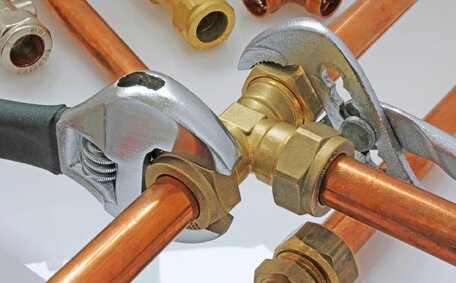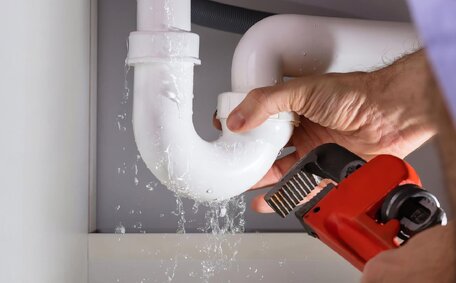Introduction to Water Pressure and Hot Water Systems
Optimal water pressure is crucial for the proper functioning of gas hot water systems in homes and businesses. Hot water systems rely on adequate water pressure to push water through the unit, overcoming any potential build up, and heat it up for supply hot water distribution. Insufficient hot water pressure can diminish water flow, causing issues like:
- Low flow from taps and showers can indicate a drop in your system’s hot water pressure, causing discomfort and inconvenience.
- Extended waiting periods for hot water to reach taps
- Inadequate gas hot water supply, leading to limited or no availability for all uses
- Temperature fluctuations
There are a few key reasons why water pressure to a hot water system may drop:
- Sediment buildup - mineral deposits and sediment scale accumulating inside the water pipes, valves, and heat exchanger can restrict water flow.
- Faulty parts - A malfunctioning pressure regulator or relief valve, or a faulty tempering valve can impact water flow, jeopardising the pressure your home relies on.
- Partially blocked pipes - Clogs from sediment, corrosion, kinks, etc. limit your cold water supply.
Regularly check your hot water system’s pressure to safeguard its performance. Typical residential cold water pressure should fall between 45-80 PSI.
If your water pressure too falls outside this range, or you notice a concerning your cold water pressure drop or cold water flow, engage a licensed plumber to resolve the issue.
How Water Pressure Can Impact Hot Water System Performance
Maintaining adequate water pressure is crucial for efficient hot water flow throughout your home. Excessively high or low water pressure can cause several issues, including:
- Low Water Pressure - Water pressure below 45 PSI might not offer adequate flow for prompt water heating. This results in low hot water pressure, affecting the flow from taps, inconsistent heating, and fluctuating temperatures.
- High Water Pressure - Water pressure above 80 PSI can overburden valves, pipes, tanks, and other components, causing damage. This can lead to leaks, flooding, premature component failure.
A consistent water pressure between 45-80 PSI is optimal for efficiency and system longevity. Systems can with multiple bends in plumbing lines may also benefit from a pressure regulating valve after the water metre to ensure adequate and consistent flow.
Periodically monitor your water pressure and have local St Ives plumbers check it if low pressure affects hot water flow. Your hot water pressure being low or fluctuating signals the need for a licenced plumbing inspection and repairs to restore proper system performance.
Common Causes of Low Hot Water Pressure
There are several common issues that can lead to low hot water pressure from your St Ives hot water system:
Sediment Buildup
Over time, Sediment and scale in your water heater can accumulate in the tank, pipes, valves, and heat exchanger. This accumulation limits water flow and causes pressure to slow just one of several signs of plumbing issues. Indicators of sediment issues are unusual sounds from the tank and consistently low hot water pressure.
Partially Closed Shutoff Valve
If the valve your shutoff is feeding the main water supply lines to your hot water heater are not fully open, it can reduce your water pressure, thus constricting the water supply. Ensure the shutoff valves around your water heater are fully open to maintain correct flow.
Faulty Pressure Regulator
A faulty pressure regulator on the water supply line can lead to water pressure fluctuations in your home’s system, affecting your hot water service. Have a plumber check and replace any malfunctioning pressure regulators.
Clogged Pipes or Fittings
Corrosion and mineral deposits can lead to a situation where your pipes, aerators, strainers, and valves leading to or from your water heater gradually clog over time. Partial obstructions typically reduce water flow and decrease pressure. A plumber can remedy the situation by clearing blockages in your tank and the related pipes and fittings.
If you experience low hot water pressure in St Ives, consult trusted local plumbing experts to assess your system and pinpoint the issue. Proper repairs can restore all your water system pressure and hot water flow.
Troubleshooting Low Hot Water Pressure
Flush the Water Heater Tank
Flushing your hot water tank, whether it be a Rheem, Rinnai, Aquamax, or Dux is the first step in troubleshooting a gas hot water system with low pressure. Sediment and scale build-up in your system is a common restricted flow cause of low water pressure. Flushing eliminates this buildup, which is a cause low hot water, permitting water to stream unobstructedly through your tank and pipes.
- Switch off the power to your hot water system.
- Connect a hose to the water tank’s drain valve and lead it to an adjacent drain.
- Open the drain valve and let water flow until it runs clear.
- Close the valve, fill up the tank, and turn power back on.
Inspect Plumbing Fittings and Fixtures
Check for clogged aerators, strainers, shower heads, and your toilet, valves, and supply lines. Remove and soak these components in white vinegar or limescale remover to dissolve any built-up mineral deposits restricting flow.
Check for Leaks
Leaks in the hot water line can introduce air, reducing water pressure. Inspect all fittings and joints for signs of water leaks. Call professional licenced Sydney plumber repair any leaks found.
Install a Pressure Regulating Valve
In some cases, overall water pressure to the home may be too high or prone to fluctuations that affect hot water flow. Installing a pressure regulating valve introduces moderation into your pressure, maintaining a consistent 45-60 PSI supply to the hot water system.
Maintaining Proper Water Pressure
Maintaining water pressure within the 45-80 PSI range is vital for your unit’s maximum efficiency. Fluctuating high or pressure could be too low leading to flow problems, temperature instability, increased wear and tear, and shorter unit lifespan.
Test and Monitor Water Pressure
Use an inexpensive water pressure gauge to periodically check your home’s pressure. Consistent readings between 45-80 PSI indicate your system is getting adequate flow. Keeping records helps you notice any drops that require attention.
Install a Pressure Regulator
A pressure regulator controls spikes and dips by moderating flow. This ensures optimal pressure, enhancing the performance of appliances such as water heaters. Upgrading older plumbing with regulators provides stability many older Aussie homes lack.
Flush Pipes and Replace Old Plumbing
Regular pipe flushing can address hot water pressure low by removing deposits as sediment builds up, which in turn, enhances water flow. Replacing ageing steel or copper pipes with PEX piping also enhances consistent pressure delivery to your hot water system.
Contact our licenced St Ives plumbers for professional installation of pressure regulators tailored to your home’s needs. Regular plumbing maintenance is key to optimising hot water system efficiency and longevity.






